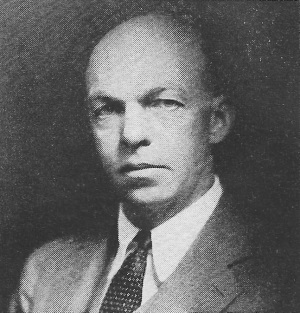|
March 1954 Radio-Electronics
 [Table of Contents] [Table of Contents]
Wax nostalgic about and learn from the history of early electronics.
See articles from Radio-Electronics,
published 1930-1988. All copyrights hereby acknowledged.
|
This 1954 issue of
Radio-Electronics magazine reported on the death of electronics
communications pioneer Major Edwin H. Armstrong. Most famously known for his
wideband FM (frequency modulation) scheme, Maj. Armstrong also developed the
superheterodyne circuit, the superregenerative circuit, and was an independent
inventor of regeneration. As with many prodigious, prolific inventors throughout
the ages, he spent much time and fortune battling legal claims against himself
and against others. Interestingly, the news item does not mention that
Major
Armstrong, who was famous for his daring antics at the tops of extremely
high antennas, died after jumping out of his New York City apartment window. It
was ruled a suicide based on a note he left for his wife.
Also included is a bit about a judge allowing radar data from police as evidence
in a speeding charge, and a statistic showing 47,000 people injured themselves
in the past year during TV antenna installations.
The Radio Month
 Major E. H. Armstrong, inventor of our present system of frequency
modulation and other basic radio circuits died on February 1 at the age of 63. Major E. H. Armstrong, inventor of our present system of frequency
modulation and other basic radio circuits died on February 1 at the age of 63.
His most widely used and renowned development, the superheterodyne circuit, is
almost universally used in both AM, FM, and TV receivers. He was the inventor of
the superregenerative circuit, and an independent inventor of regeneration, though
the courts - after a 12-year battle-ruled that de Forest had discovered it earlier.
Frequency modulation came in 1935.
His most recent development was a system of multiplexing FM broadcasts so that
more than one program could be transmitted simultaneously at the same frequency.
His FM station KE2XCC operating on 92.1 mc is known by radio engineers throughout
the world. There, Armstrong did much of his FM development, and the station became
the prototype of modern FM stations.
Armstrong served in the Army Signal Corps in World War I. In World War II his
major contributions were in the field of radar, much of which is still secret.
He also contributed many improvements in radio communications, particularly in
short-wave transmission. It was upon his recommendation that the Army adapted FM
for mobile radio communication.
During his lifetime Major Armstrong received many honors including the Medal
of Honor of the I.R.E. and the Army Medal of Merit, presented to him by President
Truman in 1947 with a citation stating that "Maj. Armstrong contributed greatly
to the improvement of military communications by his inventions in the field of
radio and by his unselfish, patriotic service to the Signal Corps."
At the time of his death, Major Armstrong was professor of electrical engineering
at Columbia University, from which he graduated in 1913.
Electronic Translator capable of turning Russian into English
has been demonstrated by IBM.
The mechanical part of the device, which is mostly electronic, is the IBM type
701 electronic data processing machine. The Russian sentences that are to be translated
are first coded on punch cards similar to those used for Government checks, and
then fed into the machine. Seconds later, an automatic typewriter spells out the
translation.
The electronic translator has a 250-word vocabulary covering a broad range. It
converts these words into its own binary language and then translates them, using
its "stored dictionary" and "syntax."
Radar Speed Detection was recently upheld in New York State.
Monroe County Judge D. J. O'Mara has upheld an auto speeding conviction based on
radar evidence. The appellant, who was convicted last June, argued that there was
no proof of the accuracy of the radar detector.
TV Antenna Accidents figured prominently in a recent report
by the American Mutual Liability Insurance Co. As a result of the current do-it-yourself
rage, the report says, approximately 59,000 TV set owners were injured this past
year in the process of installing their antennas.
In addition to the accidents definitely attributed to antenna installation, another
47,000 injuries were classified as "roof accidents." No indication was given as
to how many of these injuries may have been due to patching the roof after an antenna
had been erected by an amateur do-it-yourself installer.
Posted May 24, 2022
|








 Major E. H. Armstrong, inventor of our present system of frequency
modulation and other basic radio circuits died on February 1 at the age of 63.
Major E. H. Armstrong, inventor of our present system of frequency
modulation and other basic radio circuits died on February 1 at the age of 63.
